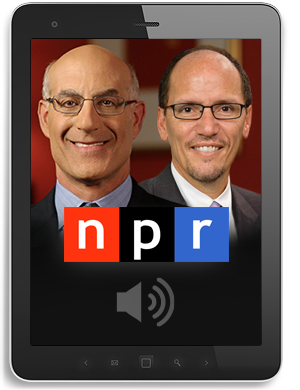Are Your Funds Keeping You from Becoming A Millionaire?
Mutual funds can drain upwards of $1 million from an investor’s retirement savings over the course of several decades, according to a recent study. The study, conducted by MarketRiders, a company whose website helps investors build exchange-traded fund portfolios, provides a unique long-term glimpse into the corrosive effect of mutual funds’ fees.
[See U.S. News’s list of the Best Mutual Funds for 2010, and use our Mutual Fund Score to find the best investments for you.]
“Fees are recurring revenue [for fund companies],” says MarketRiders CEO Mitch Tuchman. “They’re just siphoned out of accounts in ways that one cannot [easily] see. It’s an insidious process.”
In the study, Tuchman created two individual retirement accounts: one comprised entirely of ETFs and the other entirely of mutual funds. Both portfolios had a starting value of $100,000. Tuchman assumed that a hypothetical investor contributed $4,000 annually to each IRA and that each portfolio returned 7.5 percent annually.
If an investor began contributing at age 35, the mutual fund portfolio would be worth $2.04 million by the time he reached age 76. The ETF portfolio, meanwhile, would be worth a whopping $3.15 million.
Each IRA consisted of 21 funds that gave investors broad exposure to stocks and bonds, both foreign and domestic. In the mutual fund portfolio, the average expense ratio was 1.39 percent. In the ETF portfolio, it was just 0.21 percent.
Tuchman says that investors tend to misjudge the cumulative impact that fees can have. “They think, ‘It’s just 1 percent or 1.5 percent; what’s the big deal?’” he says. “It sounds like a small amount, but it’s of all of your money, [and it’s] every year.”
While Tuchman’s numbers are certainly striking, there are a number of wrinkles in the study. For starters, he compares actively managed mutual funds with ETFs and assumes equal performance over time.
This is problematic because the whole point of actively managed mutual funds is that they are supposed to beat their benchmark indexes. The way Tuchman sees it, therein lies the problem. In other words, he contends that over the long haul, a large portfolio of expensive, actively managed mutual funds can never be expected to beat (after management costs are factored in) a comparable ETF portfolio.
“When you compound it and look at it over long periods of time…then you say, ‘Well, how can fund managers overcome that kind of a handicap?’ And the truth is, they can’t; they don’t,” he says. “That’s the whole joke of the beat-the-market crowd when they’re helping people invest for retirement.”
Certainly, though, there are a number of active funds that consistently trounce their ETF counterparts. But even if that weren’t the case, if an investor is to assume that ETFs and mutual funds are going to get the same annual returns, then it would be more apt to compare ETFs with index mutual funds than it would to be to match them up against active funds. After all, index funds are often far less expensive than their active counterparts.
For instance, one of the funds in Tuchman’s ETF portfolio is Vanguard Total Bond Market (BND), which has an expense ratio of 0.1 percent. In the mutual fund portfolio, Tuchman swaps out BND and replaces it with C shares of Eaton Vance Strategic Income (ECSIX). The C shares of the Eaton Vance fund come with an expense ratio of 1.83 percent. But BND has a mutual fund sibling, the Vanguard Total Bond Market Index (VBMFX), which carries an expense ratio of just 0.22 percent.
Admittedly, the ETF option still has a more favorable expense ratio. But there are other costs to factor in, too. The most important of them is that in most cases, ETF investors need to pay a commission each time they make a trade. For investors who make small, monthly contributions to a diversified retirement portfolio, these transaction costs could be far more corrosive than mutual fund fees. In fact, they would be “cost prohibitive,” says Paul Justice, an ETF analyst with Morningstar.
On the other hand, investors who contribute just once a year, particularly to a more compact portfolio (i.e., fewer trades are involved), can often absorb these commissions and still come out ahead. Either way, though, the MarketRiders study doesn’t account for commissions.
So when it comes down to it, investors should still be asking themselves the same old questions: Can actively managed funds add value? If not, is it more practical to invest in an index mutual fund or in an ETF? The answers to these questions, of course, are highly personal, and there’s no one-size-fits-all equation.
Another interesting set of statistics from the MarketRiders study illustrates how much more money investors can earn if they get an early start to saving for retirement. Remember the investor mentioned above whose mutual fund portfolio would be worth $2.04 million when he reached age 76? Well, if he began contributing at age 45 as opposed to 35, the portfolio would be worth $1.1 million instead, according to Tuchman. And if he started at 55, it would be worth just $577,000.






